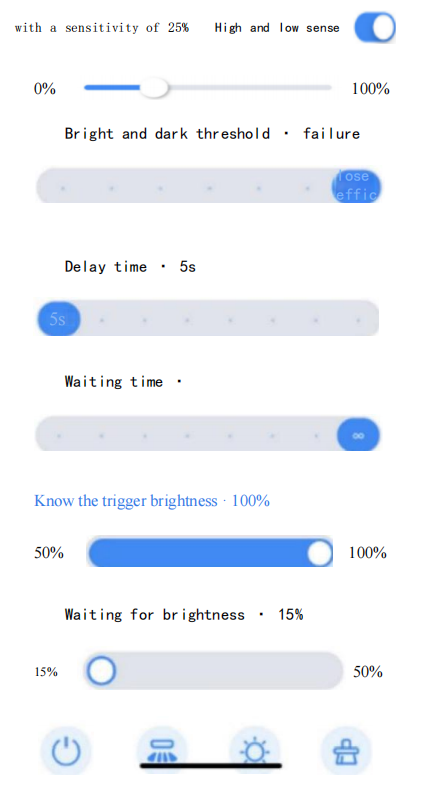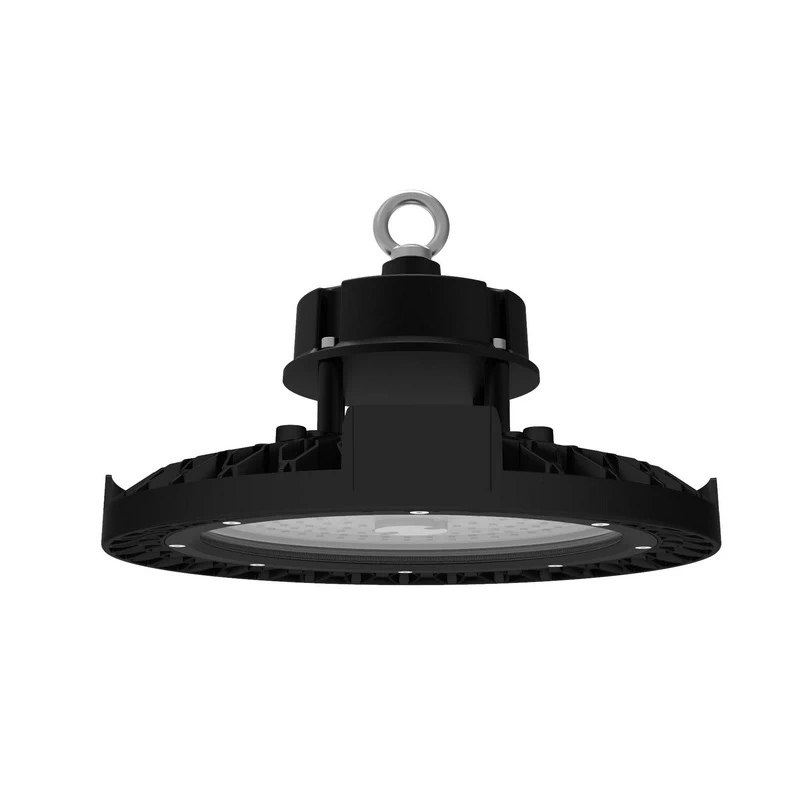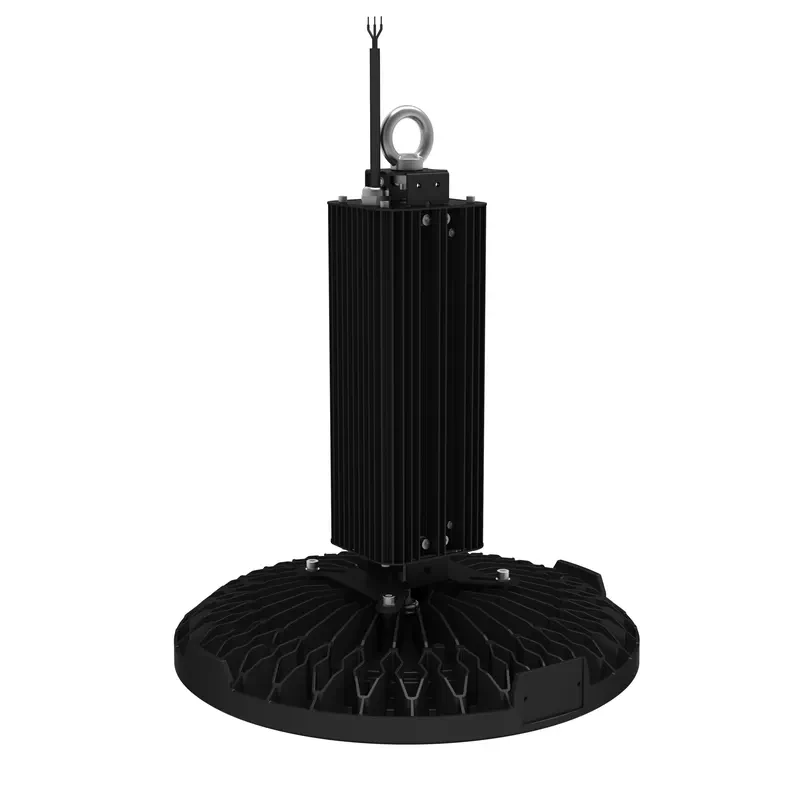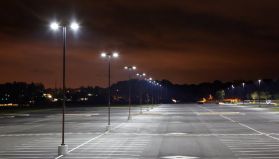LED 디밍 작동 방식 - 실외 조명 및 실내 조명
LED 디밍 은 특히 다음과 같은 산업 환경에서 현대 조명 시스템의 중요한 측면입니다. 공장, 포트및 경기장조명 요구 사항이 크게 달라질 수 있습니다. 방법 이해 LED 디밍 조명 작업과 관련된 다양한 기술을 통해 에너지 소비를 최적화하고 조명 품질을 개선하며 조명 기구의 수명을 연장하는 것이 핵심입니다.
무엇 디밍?
디밍 를 조정하는 과정을 말합니다. LED 조명의 밝기 를 사용하여 다양한 조명 요구 사항을 충족할 수 있습니다. 광원의 광속을 줄이거나 늘려서 다양한 애플리케이션에 맞게 조명 환경을 조정할 수 있습니다. 다음과 같은 기능 희미한 LED 조명 는 공장, 창고, 스포츠 경기장 등 효율성이나 분위기를 위해 조명 수준을 조정해야 하는 환경에서 매우 중요합니다.
디밍 LED 조명: 방법 및 기술
LED 조명 디밍 다양한 방법을 통해 달성할 수 있습니다. 각 방법에는 환경과 원하는 조명 제어에 따라 특정 용도가 있습니다. 항만이나 경기장과 같은 산업 환경에서는 안정적이고 효율적인 LED 조명용 디밍 시스템 는 실내 및 실외 조명 모두에 필수적입니다.
1. PWM(펄스 폭 변조) 디밍
그리고 PWM 디밍 방법 는 구형파의 듀티 사이클을 제어하여 아날로그 신호를 디지털 신호로 변환하여 회로의 전류를 조정합니다. 신호의 '켜기' 및 '끄기' 시간을 변경하여 조명에 도달하는 전류의 양을 줄여 부드럽고 효율적인 조명을 만들 수 있습니다. 디밍.
2. 전압 디밍
여기에는 전압 조명에 공급됩니다. In LED 조명 시스템특히 하프 브리지 인버터 전원 공급 장치에서 디밍은 DC 전압을 제어하여 이루어집니다. 이렇게 하면 램프 전류가 변경되어 광 출력이 감소하고 디밍 효과가 발생합니다.
3. 펄스 주파수 변조 디밍
이 방법은 밸러스트의 작동 주파수를 변경합니다. 밸러스트 인덕터의 저항을 증가시켜 전체 전류를 줄입니다. 이 방법은 형광등 조명 시스템에 자주 사용되지만 다음과 같은 경우에 적용할 수 있습니다. LED 디밍 를 사용하여 비슷한 결과를 얻을 수 있습니다.
4.위상 제어 디밍
위상 제어는 다음과 같은 경우에 널리 사용되는 방법입니다. 디밍 백열등에도 적용할 수 있습니다. LED 조명. A 사이리스터 는 AC 신호의 위상각을 제어하여 출력 전압을 효과적으로 낮추는 데 사용됩니다. 이를 통해 조명의 밝기 레벨을 정밀하게 제어할 수 있습니다.
5.정전류 디밍
그리고 정전류 디밍 방법 는 조명을 통해 흐르는 전류를 조절하는 것입니다. 아날로그 제어로 전류를 조절하면 다음과 같은 조명의 밝기를 효율적으로 제어할 수 있습니다. LED 조명를 사용하면 밝기가 변해도 일정한 광 출력을 유지할 수 있습니다.
6. 저항 디밍
이 방법에서는 가변 저항을 조명과 직렬로 배치합니다. 저항을 조정하면 전류가 감소하여 밝기가 감소합니다. 이 방법은 가장 효율적인 방법은 아니지만 LED 디밍를 사용하면 특정 애플리케이션에서 간단하고 효과적입니다.
7. 단계별 디밍
전원 스위치를 특정 패턴으로 토글하여 여러 밝기 레벨을 설정할 수 있습니다. 이 방법은 일반적으로 다음에서 사용됩니다. LED 조명 무한 가변 디밍이 필요하지 않은 상업 및 산업 공간용 조명기구입니다.
8.아날로그 디밍
이 방법에서는 LED 는 아날로그 컨트롤을 사용하여 전압 신호를 수정하여 조정합니다. 아날로그 디밍은 정확하고 효과적이지만 다음과 같은 최신 디지털 방식에 비해 빛의 출력이 일정하지 않을 수 있습니다. PWM.
표: 일반적인 LED 디밍 기술 비교
|
디밍 방법 |
애플리케이션 |
장점 |
도전 과제 |
|
PWM 디밍 |
산업 및 실외 조명 |
정밀한 제어, 에너지 효율 |
낮은 디밍 레벨에서 깜박임이 발생할 수 있습니다. |
|
위상 제어 디밍 |
고전력 애플리케이션(경기장) |
간편하고 비용 효율적 |
항상 모든 것과 호환되는 것은 아닙니다. LED 조명 |
|
0-10V 디밍 |
공장, 항구 |
부드러운 디밍, 안정적 |
특수 배선 필요 |
|
DALI 디밍 |
상업용 및 산업용 애플리케이션 |
확장 가능한 지능형 제어 |
복잡한 설정 |
LED 램프는 현재 스위칭 전원 공급 장치를 사용합니다. 사이리스터 디밍, PWM, 0-10V(선형 디밍), DAIL, DMX512 등의 방법을 사용하여 밝기를 조절할 수 있습니다.
어떻게 LED 조광기 일?
이해 LED 조광기의 작동 원리 는 강력한 LED용 디밍 시스템 산업 환경에서 LED 디머 스위치 조명에 흐르는 전류의 양을 제어하여 설정된 입력에 따라 밝기 레벨을 조정합니다. 다음과 같은 기능 희미한 LED 조명 는 유연성을 제공할 뿐만 아니라 특히 경기장이나 창고와 같이 다양한 조명 요구 사항이 있는 환경에서 에너지 효율을 향상시킵니다.
모든 LED 조명을 디밍할 수 있나요?
전부는 아닙니다 LED 조명 에 관한 한 동등하게 만들어집니다. 디밍. "모든 LED 조명은 디밍 가능상업 또는 산업 환경에서 조명 업그레이드를 고려할 때 흔히 하는 질문입니다. 답은 LED 조명 디머 및 특정 LED 조명 사용 중입니다. 예를 들어 LED 리듬의 제품과 같은 하이 베이 LED 조명 그리고 증기 밀폐형 LED 조명는 다음을 위해 특별히 설계되었습니다. 디밍 가능 애플리케이션 실내 및 실외 환경 모두에서 사용할 수 있습니다.
디밍 가능한 LED 조명: 장점
-
에너지 절약: 밝기를 줄임으로써 LED 조명특히 다음과 같은 대규모 산업 환경에서 상당한 에너지 절감 효과를 얻을 수 있습니다. 포트 그리고 공장.
-
수명 연장: 디밍 의 부담을 줄여줍니다. LED 드라이버를 사용하여 조명기의 수명을 연장합니다.
-
사용자 지정: 디밍 가능한 LED 조명 조명 환경에 대한 더 많은 제어 기능을 제공합니다. 경기장, 공장또는 상업용 건물.
디밍 LED 조명 산업 및 상업용 애플리케이션
다음과 같은 기능 희미한 LED 조명 는 특히 다음과 같은 산업 및 상업 환경에서 에너지 소비와 운영 효율에 큰 영향을 미칩니다. 공장, 포트및 경기장. 구현하기 LED용 디밍 시스템 최적의 조명 조건을 유지하면서 에너지 비용을 크게 절감할 수 있습니다.
1. LED 하이 베이 조명
창고나 공장과 같은 산업 환경에서, LED 하이 베이 조명 조명기구는 다양한 작업과 활동을 수용할 수 있도록 밝기를 조절할 수 있어야 합니다. LED 리듬의 하이 베이 LED 조명 는 다양한 디머를 사용하여 넓은 공간에서도 유연하게 사용할 수 있습니다.
2. LED 로우 베이 조명
다음과 같이 낮은 수준의 조도가 필요한 영역의 경우 보관실 또는 상업용 차고, 로우 베이 LED 조명 그리고 LED 로우 베이 조명기구 는 이상적인 디밍 솔루션을 제공합니다. 이 조명은 균일한 커버리지를 제공하며 환경의 특정 요구에 따라 밝기를 조절할 수 있습니다.
3. 투광 조명 및 실외 조명
실외 LED 조명특히 경기장 그리고 포트또한 다음과 같은 이점을 누릴 수 있습니다. 디밍 기능을 사용할 수 있습니다. 디밍 가능한 투광 조명 이벤트나 시간대에 따라 조명 수준을 조정할 수 있어 전력을 가장 효율적으로 사용할 수 있습니다.
일반적인 문제 디밍 LED 조명
동안 LED 디밍 는 많은 이점을 제공하지만, 발생할 수 있는 일반적인 문제를 이해하는 것이 중요합니다:
-
깜박임: 품질 저하 LED 조광기 또는 호환되지 않는 시스템에서는 조명이 어두워질 때 깜박거릴 수 있습니다.
-
버즈: 일부 LED 조명 호환되지 않는 제품과 함께 사용하면 윙윙거리는 소리가 날 수 있습니다. 디머 스위치.
-
디밍 제한: 전부는 아닙니다 LED 조명 는 문제 없이 매우 낮은 수준으로 어둡게 설정할 수 있습니다. 특정 LED 디밍 시스템 가 중요합니다.
디밍 애플리케이션의 관점에서: 유선 제어 및 무선 제어
유선 디밍 제어는 신호가 안정적이고 신뢰할 수 있습니다. 무선 디밍 제어는 설치가 쉽지만 간섭을 받기 쉽고 안정성이 떨어집니다.
유선 디밍 제어 방식.
![]()
무선 디밍 제어 방법. 일반적인 신호 전송 프로토콜로는 지그비, 블루투스, WiFi 프로토콜이 있습니다.

Ledrhythm의 디밍 제품
LED 리듬 는 산업 및 상업용 애플리케이션을 위한 다양한 디밍 가능 조명 솔루션을 제공합니다:
-
LED 리듬 하이 베이 LED
-
LED 리듬 베이퍼 타이트 LED
-
LED 리듬 디머블 LED 스트립 조명
가로등, 투광등, 채광용 램프, 트라이프루프 램프 등 Ledrhythm의 제품에는 모두 디밍 솔루션이 있습니다. 자세한 내용을 보려면 여기를 클릭하세요.
가로등, 산업용 및 광산용 램프 등은 마이크로파 센서와 광센서를 사용하여 디밍 제어를 수행합니다. 디밍 효과는 그림에 나와 있습니다.

유선 중앙집중식 장치 또는 앱을 통한 무선 제어를 통해 가로등, 투광등, 채광등을 제어할 수 있습니다. 이를 통해 조명의 디밍 시간, 효과 및 그룹을 조정할 수 있습니다.

결론 결론: 미래 디밍 LED 조명 산업 애플리케이션
미래 LED 디밍 조명 원격으로 또는 다음을 통해 제어할 수 있는 더 스마트하고 통합된 시스템에 있습니다. 자동화된 시스템. 다음과 같은 산업 환경에서는 공장, 포트및 경기장를 사용하여 조명 수준을 사용자 지정할 수 있습니다. 디머블 LED 시스템 는 에너지 효율성과 운영 유연성을 개선하는 데 점점 더 중요해지고 있습니다.
LED 리듬 고급 디머블 제품과 같은 하이 베이 그리고 증기 차단 조명기구는 대규모 산업 애플리케이션을 위한 에너지 효율적이고 맞춤형 조명 솔루션을 제공하는 데 앞장서고 있습니다.









